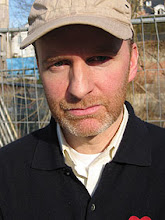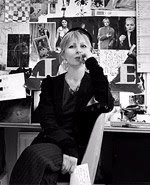Ann Demeulemeester (1959, Waregem, Belgium) graduated from the Belgium's prestigious Royal Academy of Fine Arts in Antwerp in 1981. Soon after, she stormed the runways as part of the avant-garde “Antwerp Six,” and brought an arty moodiness to fashion. She currently lives in a Corbusier-designed home in Antwerp.
Demeulemeester launched her line in 1985 and soon it became known as an experimental—yet wearable—line. She has consistently attracted clients who like a little artiness in their wardrobes. The designer mixes and matches different fabrics and then slashes, rips, and tears them, often in a moody palette of brown, gray, and black. But she has been known to tap into a cheerful femininity from time to time as well. But Demeulemeester’s signature is a slouchy masculine look that references her longtime muse Patti Smith. The singer has sometimes created special spoken-word poetry for Demeulemeester’s runway soundtracks. Patti Smith 's lyrics, from the other side, had often an influence on the prints as well. Currently, she is working on a clothing line inspired by Jackson Pollock. Ann Demeulemeester has also worked with the artist Jim Dine.








